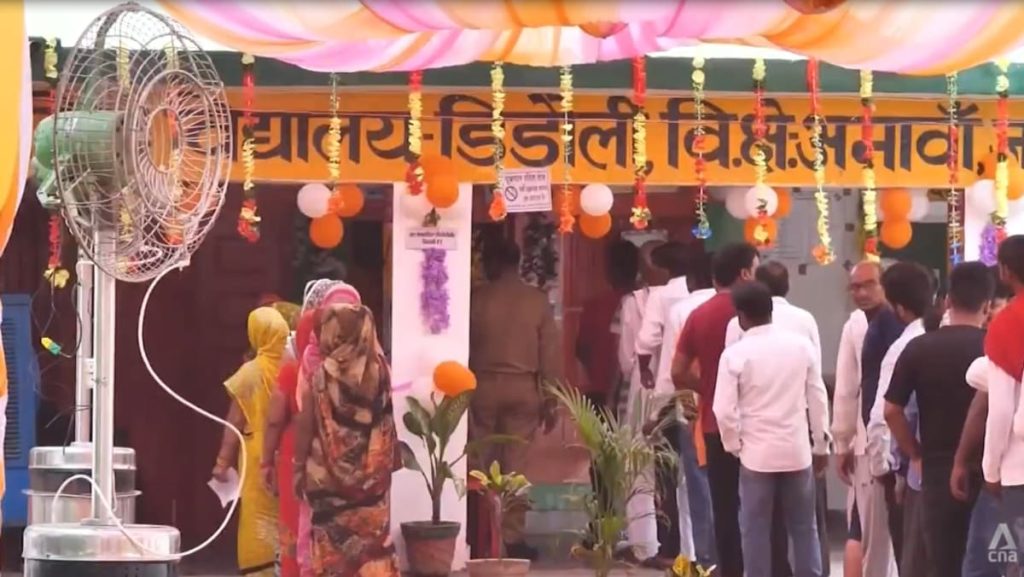Madam Nisha Janotri and her husband must brave India’s scorching temperatures to run their clothes ironing stand in South Delhi, where they do not have access to electricity or a fan. The use of a charcoal iron only adds to the heat they must endure. Despite the challenging conditions, the couple continues to pick up clothes from various homes, iron them, and deliver them back to their customers. The intense heat sometimes leaves Nisha feeling weak and lightheaded, highlighting the physical toll that the extreme weather can take on individuals in vulnerable situations.
Across India, temperatures have soared beyond 45 degrees Celsius, with New Delhi experiencing highs of 47.4 degrees Celsius. As the country grapples with these scorching temperatures, authorities in the capital have issued a high-level alert for severe heatwaves. In the western state of Rajasthan, at least nine people have died due to suspected heat stroke, further underscoring the dangers posed by the extreme weather conditions. The situation has been exacerbated by fewer non-monsoon thundershowers and the weakening El Nino weather phenomenon, leading to a higher number of predicted heatwave days this year.
The ongoing general election in India has coincided with the peak of the summer temperatures, raising concerns about the impact of the extreme heat on voter turnout. Climate experts have criticized the lack of preparation for the hot weather by India’s election body, suggesting that this may have contributed to lower participation in the polls. Furthermore, the lack of emphasis on climate change and sustainable policies in the manifestos of political parties has drawn criticism from experts, highlighting a missed opportunity to address the pressing climate crisis in the country. The failure to prioritize climate change in the political discourse has wider implications for India’s ability to mitigate the impacts of extreme weather events and adapt to changing environmental conditions.
As the mercury continues to rise in India, particularly in urban areas like New Delhi, vulnerable populations such as daily wage workers like Nisha and her husband are bearing the brunt of the extreme heat. The lack of basic amenities like electricity or cooling facilities exacerbates their exposure to the harsh weather conditions, posing health risks and challenges to their livelihoods. The situation underscores the urgent need for comprehensive policies and interventions to protect vulnerable communities from the impacts of climate change and extreme weather events. Addressing climate-related vulnerabilities requires a multi-faceted approach that includes infrastructure improvements, public health measures, and community support to ensure the well-being of all individuals, especially those most at risk.
In the midst of the heatwave crisis in India, there is a critical need for government action, public awareness, and community resilience to mitigate the impact of extreme weather events on vulnerable populations. The severe heatwaves gripping the country serve as a stark reminder of the urgent need to address climate change and prioritize sustainable development practices in policy-making and decision-making processes. As the effects of climate change become increasingly evident, it is essential for all stakeholders, including governments, civil society, and the private sector, to work together to build resilience, reduce vulnerability, and ensure that measures are in place to protect those most affected by extreme weather events. The heatwave conditions in India underscore the interconnectedness of climate change, public health, economic well-being, and social justice, highlighting the need for coordinated efforts to address the multifaceted impacts of environmental degradation and extreme weather events on society as a whole.


